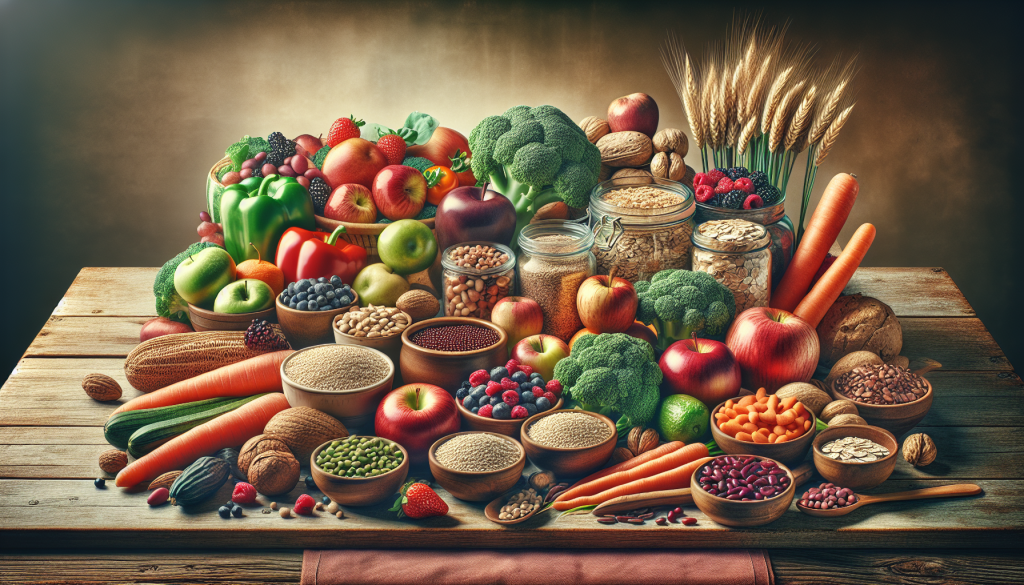
In today’s health-conscious society, the emphasis on integrating nutrition fiber foods into our daily diet remains strong. Dietary fiber, primarily found in fruits, vegetables, grains, and legumes, is known for its myriad health benefits, including aiding digestion, preventing heart disease, and managing weight. Yet, meeting the daily recommended intake remains a challenge for many. This article delves into the top sources of nutritional fiber foods, providing insights to help you craft a diet that prioritizes health and vitality.
Dietary fiber is a type of carbohydrate that the body cannot digest. While this might seem counterintuitive for a nutrient’s value, fiber plays several critical roles: it helps to maintain bowel health, lowers cholesterol levels, controls blood sugar levels, and aids in achieving a healthy weight. Women should aim for about 21 to 25 grams a day, while men should target 30 to 38 grams, according to the Mayo Clinic.
Fruits are a delicious and versatile source of fiber. Apples, for example, provide 4 grams of fiber per medium fruit, offering a refreshing and filling snack. Meanwhile, pears outshine with about 6 grams per medium-sized piece, making them one of the most fiber-rich fruits available. Berries, especially raspberries and blackberries, are also exceptional, providing around 8 grams of fiber per cup. Their vibrant color and tart flavor make them an excellent addition to cereals, yogurts, and salads.
Vegetables are another cornerstone of nutrient fiber foods. Brussels sprouts and broccoli deserve special mention due to their high fiber content—these cruciferous vegetables pack about 3 to 4 grams per cup. Artichokes lead the pack with a remarkable 10 grams of fiber per medium vegetable. Incorporating more leafy greens, carrots, and beets can also boost fiber intake. The latter is particularly useful for heart health due to its unique combination of vitamins, minerals, and bioactive compounds.
Whole grains are pivotal in a fiber-rich diet. Oats shine as a breakfast staple, providing a solid 4 grams per cup cooked. Brown rice, quinoa, and barley are other excellent options, offering 3 to 5 grams per serving. Switching from refined grains, such as white bread and pasta, to whole grain versions is a simple change that can significantly increase your daily fiber consumption.
Legumes, such as beans, lentils, and peas, are nutritional powerhouses packed with both fiber and protein. Lentils, for instance, contain about 15 grams of fiber per cup cooked. Popular beans, like black beans and chickpeas, provide about 15 grams per cup as well. These legumes can be easily incorporated into soups, salads, and stews, offering a hearty and filling meal that aids digestion.
Nuts and seeds offer not only healthy fats and protein but also a solid dose of dietary fiber. Almonds provide around 3.5 grams of fiber per 1-ounce serving, while chia seeds boast an impressive 10 grams per ounce. Incorporating a handful of nuts into your diet or sprinkling seeds over salads and smoothies can enhance fiber intake without significant effort.
Avocados stand out as a unique fiber source, offering about 10 grams per single fruit. Used in various cuisines, they contribute healthy monounsaturated fats and are versatile enough to be used in salads, sandwiches, and even as a spread on whole-grain toast.
To ensure you’re getting enough fiber, start by making small dietary adjustments:
Integrating nutrition fiber foods into your diet doesn’t just support good digestion—it holistically enhances health, potentially reducing the risk of chronic diseases and supporting weight management. By understanding the top sources of fiber and making informed dietary choices, you can enjoy a more vibrant life with higher energy levels and improved well-being. Start today by incorporating these rich fiber foods into your meals and snacks, and reap the benefits of a healthier lifestyle.